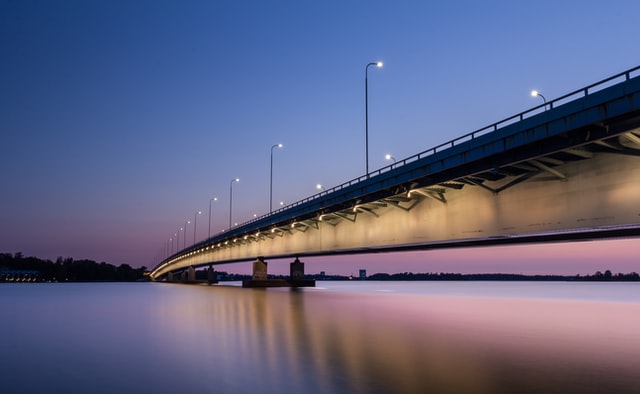Structural health monitoring (SHM) is the ongoing, near-real-time, or real-time observation and measurement of the structural performance of civil infrastructure. Buildings and structures are always undergoing some degree of stress. That could be due to weather or environmental impacts, construction on, in or around the structure, or simply the age of the structure.
Establishing an SHM system is therefore crucial and is achieved through the collection and analysis of data from a variety of sensors installed on or near the structure. The main aim of structural health monitoring is to identify early signs of structural failure so that maintenance and repairs can be carried out before any major damage occurs. Catching these early signs means costs associated with structural damage, repairs, and replacement can be reduced.
To be most effective, structural health monitoring requires continuous data collection. But the problem is, collecting data continuously can be expensive and complex.
This is where advances in IoT (and solutions like Kurloo) are set to revolutionise the way asset managers maintain the health of their structures.
Common challenges in structural health monitoring
There are typically several challenges associated with data collection for structural health monitoring, including the need for:
- reliable and accurate sensors
- a robust data collection system
- skilled personnel to operate the system
- sufficient power to run the system continuously
- secure data storage and analysis
Additionally, converting that raw data into meaningful analysis and insights can be complex. Given this analysis will inform the actions to take within the SHM system, it’s important it’s available in a timely and accurate manner. Up until now, that’s meant making some compromises on either the frequency or accuracy of the data within the monitoring program.
Luckily though, today anyone involved in the engineering, construction and maintenance of infrastructure assets has more flexible, scalable and cost effective options available.
IoT to the rescue
IoT sensors are becoming increasingly sophisticated and are able to provide more accurate data than ever before. They’re also becoming more affordable, which means that structural health monitoring systems can be deployed more widely. In addition, IoT sensors don’t require skilled personnel to operate them, and they can be powered by renewable energy sources.
Kurloo is an automated monitoring solution designed to address the very challenges associated with data collection for SHM. It’s ideally suited to long term monitoring, delivering 3D displacement insights with high precision, every day. Kurloo’s IoT devices are affordable, easy to install and operate, and self-powered. The data collected by Kurloo sensors is stored securely in the cloud, where it is post-processed. In-depth analysis and insights are then accessible to asset owners, external experts and key stakeholders within a cloud-based Software as a Service (SaaS), without the need for expensive software to be installed locally.
“Kurloo devices positioned within one kilometre of a Kurloo reference station and with a clear view of the sky could deliver daily surface displacement measurements of 3-millimetre precision in vertical and horizontal components. Clients will have access to these daily data readings and can customise alerts within the Kurloo Nest platform.”
Lee Hellen, Kurloo Technology Founder & CEO
Kurloo is changing the way asset managers monitor structural health
There are many benefits to using Kurloo for structural health monitoring, including:
- Reduced costs: Kurloo is more affordable than traditional SHM solutions. With a lower upfront cost for the devices themselves and an ongoing subscription for the Kurloo Nest platform, the business case is immediately appealing.
- Increased accuracy and precision: Kurloo uses GNSS technology to provide precise positioning data more accurately than traditional SHM solutions. Delivering measurements from 0-3mm on the vertical and 0-2mm on the horizontal, Kurloo enables an engineering level of analysis.
- Easy to install and operate: Remotely operated and managed, Kurloo doesn’t require skilled personnel. Kurloo sensors can be installed quickly and easily – and once installed, they’ll manage themselves.
- Powered by renewable energy: Kurloo sensors are powered by an onboard solar panel, making them self-sustainable. Cleverly designed to conserve power, they can last almost 2 weeks without charge.
- A completely scalable solution: Because Kurloo sensors are so simple to install, they can be redeployed on different parts of your structure or asset. As your project and the need for data grows, Kurloo can expand too. Adding extra sensors to your flock is quick and affordable.
“Engineers ensure displacement and settlement parameters are within structural design limits, but asset owners need to monitor them over time to ensure structural safety. Traditional displacement monitoring devices that need reference points are often impractical, especially over water, while levelling methods can be expensive and risky for surveyors on site.
Once firmly attached to structures, the Kurloo devices deliver structural data wirelessly to the cloud where machine learning is used to interpret and report insights to asset owners for faster maintenance and other safety decisions.”
Professor Tommy Chan, QUT co-investigator and structural engineering expert.
Continuous data collection is an essential element of an effective structural health monitoring system. It also provides a historical record that can be used to track trends over time. This is valuable information that can be used to predict when certain maintenance activities need to be carried out.
Using IoT, monitoring solutions can provide the necessary insights for asset owners to make informed decisions about infrastructure maintenance and repair, and help ensure the safety of both people and the environment.
IoT solutions like Kurloo are set to revolutionise structural health monitoring. By providing a more accurate, affordable and easy-to-use solution, asset owners can enjoy greater confidence in the maintenance of their structures – without incurring high costs.
Interested to find out more about how Kurloo can help you revolutionise the way you monitor the structural health of your assets? Contact us to talk about how Kurloo can become a crucial part of your infrastructure maintenance team.
